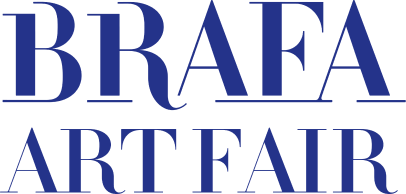DÉTAILS DE L'IMAGE
_AlbertMarquet_T638279628202104143.jpg?w=300&h=300&mode=pad&scale=both&qlt=75)
Dr. Nöth kunsthandel + galerie
Albert Marquet (Bordeaux 1875-1947 Paris)
Le Jardin à l'Estaque, 1918
Oil on board
32.8 x 41 cm
Signed lower left: Marquet, titled and signed on the reverse: Jardin à l'Estaque d'Albert Marquet
This work is accompanied by an original attestation of inclusion from the Wildenstein Plattner Institute, and it will be included in the forthcoming Albert Marquet Digital catalogue raisonné. WPI Reference n° 21.10.14/20934, 20 January 2022
Provenance: Galerie Druet, Paris; René Keller, Director of Galerie Druet, Paris; private collection, France, gift from the above; Galerie Couleur du Temps, Paris, circa 1944; Sale: Me Etienne Ader, Me Antoine Ader, Me Jean-Louis Picard, Me Jacques Tajan, Palais Galliera, Paris, Tableaux Modernes, Aquarelles et Dessins modernes, November 26, 1976, n° 104; private collection, Paris; Galerie Boulakia, Paris, acquired from the above, 1988; Galerie de la Présidence, Paris; private collection, Woodside, California, acquired from the above, 1989; thence by descent to the present owner, Carmel, California
Exhibition: Galerie Couleur du Temps, Paris, Marquet et quelques maîtres contemporains [Exposition inaugurale], March 21-April 15, 1944, n° 6 (as Jardin de l'Estaque)
Bearing in mind Albert Marquet’s typical monochrome greyish masterpieces, “Garden at l’Estaque” surprises by its colours. Smaller in size and more colourful than his usual paintings it seems to be special. During World War I Marquet spent most of his time at the Côte d’Azur mainly at Marseille and l’Estaque (just west of Marseille) together with his lifelong friend Matisse. Marquet did not choose the spectacular sea-view of l’Estaque painted by Cézanne so often but a peaceful garden with palm trees and pink bushes in full bloom. Possibly his encounters with Claude Monet in Giverny in 1917 and Renoir in Cagnes-sur-Mer the year after had served as inspiration. Inspired by the great masters of Impressionism or not his garden is in any case a typical Marquet painted in his distinctive fauvist style. The painting is a statement showing that one must not paint impressionistic in order to produce a work full of light and atmosphere. At the outbreak of the World War I – Marquet was demobilized because of his bad health and eyesight – Marcel Sembat, minister and collector, begged him to 'continue with his work, as nobody else could ever replace him in his field'. Garden at l’Estaque can be regarded as deliberate alternative draft to the battlefields and embodiment of a better, more peaceful world. Druet, the first owner of the painting, was the first gallerist offering Marquet an exclusive contract in 1905. Their collaboration was long-lasting and fruitful.



 TÉLÉCHARGER L'IMAGE
TÉLÉCHARGER L'IMAGE